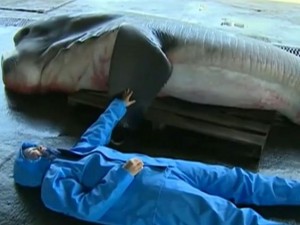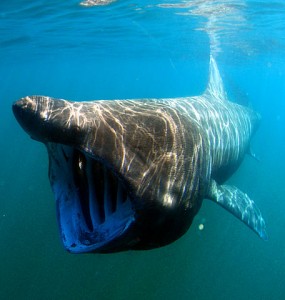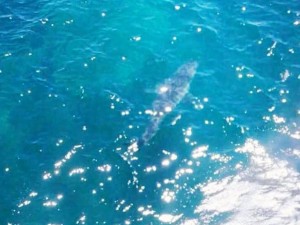Aquatic scientific names in the news …
Megamouth shark
15th April – a Megamouth shark has been reported caught in a fishing net about three miles from the Owase Port in Mie Prefecture, Japan.
 Photo showing the size of the mouth.
Photo showing the size of the mouth.
An extremely rare species of deepwater shark, it is the smallest of the three extant planktivorous sharks alongside the whale shark and basking shark, growing to a length of around 5.5 metres (male), 7.0 metres (female).
It is a filter-feeder, it feeds by swimming slowly (1.5–2.1 km/h) with its enormous mouth wide open, filtering the water for plankton, during the day at a depth of around 120–160 m, but as the sun sets rising to spend the night at depths of between 12 and 25 m, demonstrating a pattern of vertical migration seen in many marine animals as they track the movement of plankton in the water column.
The first Megamouth shark to be seen was discovered in 1976 off the coast of Kāneʻohe, Hawaiʻi, when it became entangled in the sea anchor of United States Navy ship, it was not until 1983 that it was identified as a new species and officially described.
Megamouth sharks remain rare, up until 2015 only around 60 sightings had been recorded although one source now suggests 103 sightings to date – see http://sharkmans-world.eu/mega.html
Megachasma pelagios Taylor, Compagno & Struhsaker, 1983 – Megamouth shark
Etymology.
Megachasma – Greek, Mega–, megas (μεγας), large, great; –chasma, xasma (χασμα), yawning hole, open mouth – alluding to the size of the mouth.
pelagios – Greek, (πελαγιος), of the open sea.
Ref. Megamouth – a new species, genus, and family of lamnoid shark (Megachasma pelagios, family Megachasmidae) from the Hawaiian Islands. Proceedings of the California Academy of Sciences (Series 4) v. 43


